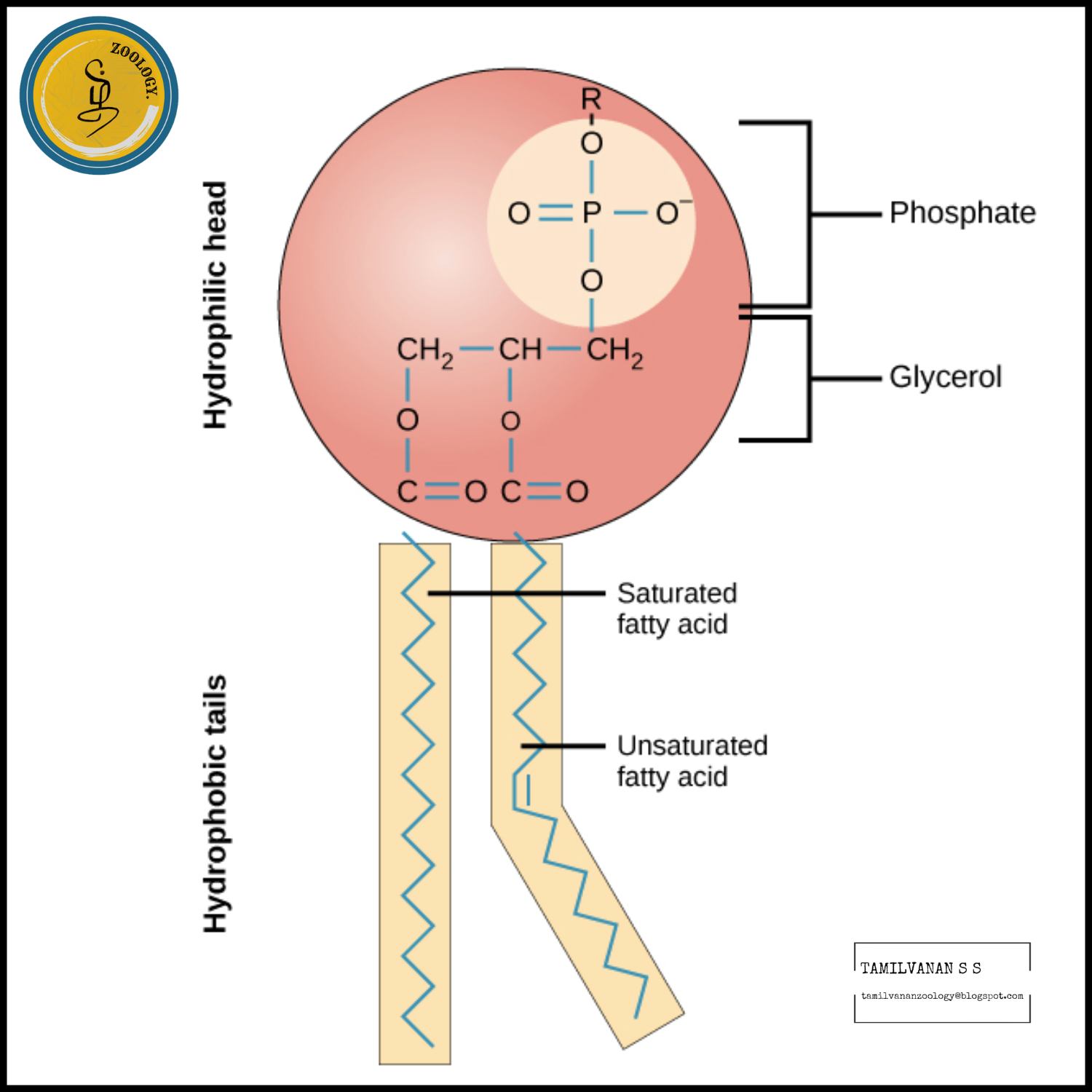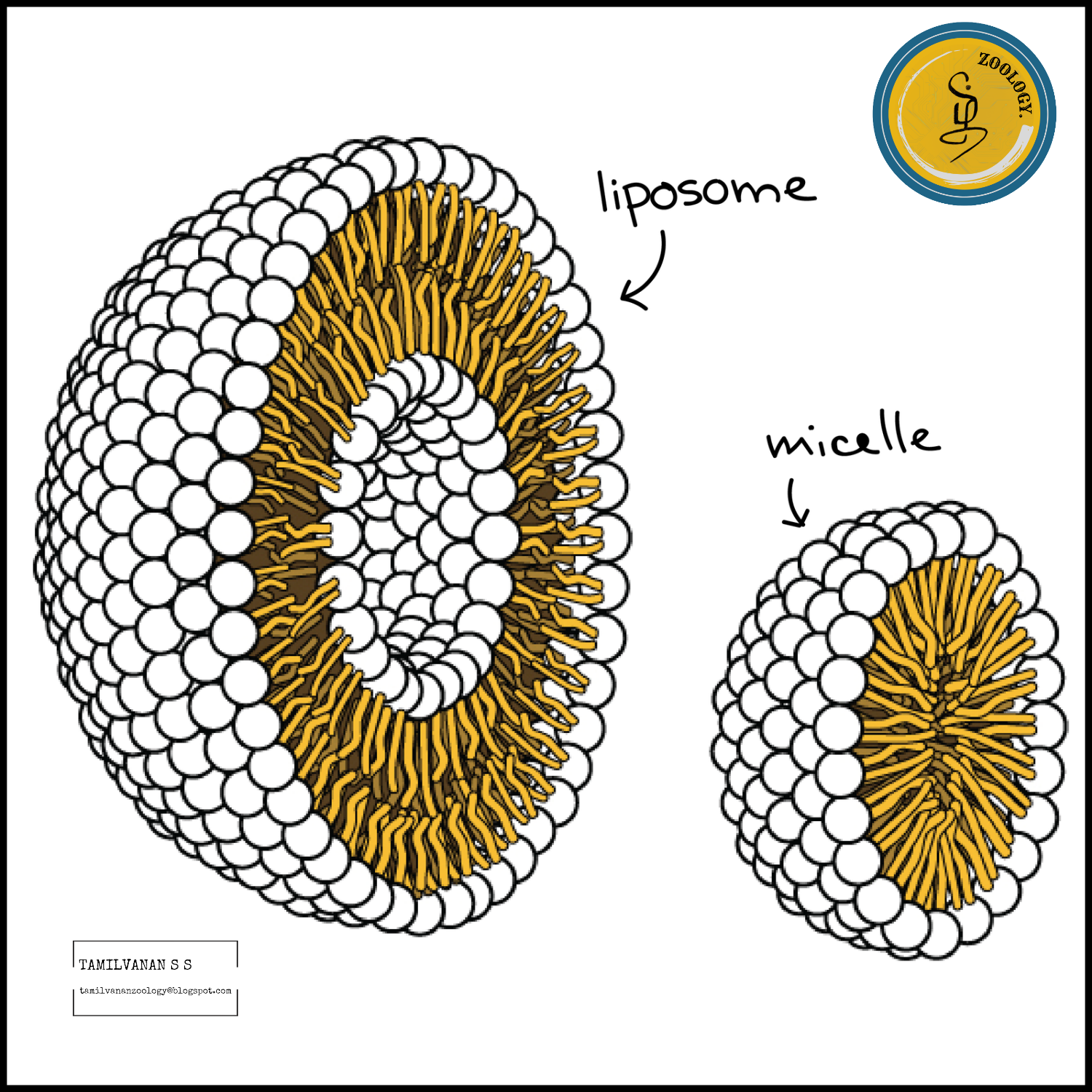Plasma membrane
Introduction
Each cell of your body is encased in a tiny bubble of membrane. This membrane has about the consistency of...salad oil. The first time I read that factoid, I didn't find it very reassuring! Salad oil seems like an awfully fragile boundary to place between a cell and the rest of the world. Luckily, the plasma membrane turns out to be very well-suited to its job, salad oil texture and all.
What exactly is its job? The plasma membrane not only defines the borders of the cell, but also allows the cell to interact with its environment in a controlled way. Cells must be able to exclude, take in, and excrete various substances, all in specific amounts. In addition, they must able to communicate with other cells, identifying themselves and sharing information.
To perform these roles, the plasma membrane needs lipids, which make a semi-permeable barrier between the cell and its environment. It also needs proteins, which are involved in cross-membrane transport and cell communication, and carbohydrates (sugars and sugar chains), which decorate both the proteins and lipids and help cells recognize each other.
Here, we’ll take a closer look at the different components of the plasma membrane, examining their roles, their diversity, and how they work together to make a flexible, sensitive, and secure boundary around the cell.
Fluid mosaic model
The currently accepted model for the structure of the plasma membrane, called the fluid mosaic model, was first proposed in 1972. This model has evolved over time, but it still provides a good basic description of the structure and behavior of membranes in many cells.
According to the fluid mosaic model, the plasma membrane is a mosaic of components—primarily, phospholipids, cholesterol, and proteins—that move freely and fluidly in the plane of the membrane. In other words, a diagram of the membrane (like the one below) is just a snapshot of a dynamic process in which phospholipids and proteins are continually sliding past one another.
Interestingly enough, this fluidity means that if you insert a very fine needle into a cell, the membrane will simply part to flow around the needle; once the needle is removed, the membrane will flow back together seamlessly.
Image of the plasma membrane, showing the phospholipid bilayer with peripheral and integral membrane proteins, glycoproteins (proteins with a carbohydrate attached), glycolipids (lipids with a carbohydrate attached), and cholesterol molecules.
Image of the plasma membrane, showing the phospholipid bilayer with peripheral and integral membrane proteins, glycoproteins (proteins with a carbohydrate attached), glycolipids (lipids with a carbohydrate attached), and cholesterol molecules.
The principal components of the plasma membrane are lipids (phospholipids and cholesterol), proteins, and carbohydrate groups that are attached to some of the lipids and proteins.
A phospholipid is a lipid made of glycerol, two fatty acid tails, and a phosphate-linked head group. Biological membranes usually involve two layers of phospholipids with their tails pointing inward, an arrangement called a phospholipid bilayer.
Cholesterol, another lipid composed of four fused carbon rings, is found alongside phospholipids in the core of the membrane.
Membrane proteins may extend partway into the plasma membrane, cross the membrane entirely, or be loosely attached to its inside or outside face.
Carbohydrate groups are present only on the outer surface of the plasma membrane and are attached to proteins, forming glycoproteins, or lipids, forming glycolipids.
The proportions of proteins, lipids, and carbohydrates in the plasma membrane vary between different types of cells. For a typical human cell, however, proteins account for about 50 percent of the composition by mass, lipids (of all types) account for about 40 percent, and the remaining 10 percent comes from carbohydrates.
Phospholipids
Phospholipids, arranged in a bilayer, make up the basic fabric of the plasma membrane. They are well-suited for this role because they are amphipathic, meaning that they have both hydrophilic and hydrophobic regions.
The hydrophilic, or “water-loving,” portion of a phospholipid is its head, which contains a negatively charged phosphate group as well as an additional small group (of varying identity, “R” in the diagram at left), which may also or be charged or polar. The hydrophilic heads of phospholipids in a membrane bilayer face outward, contacting the aqueous (watery) fluid both inside and outside the cell. Since water is a polar molecule, it readily forms electrostatic (charge-based) interactions with the phospholipid heads.
The hydrophobic, or “water-fearing,” part of a phospholipid consists of its long, nonpolar fatty acid tails. The fatty acid tails can easily interact with other nonpolar molecules, but they interact poorly with water. Because of this, it’s more energetically favorable for the phospholipids to tuck their fatty acid tails away in the interior of the membrane, where they are shielded from the surrounding water. The phospholipid bilayer formed by these interactions makes a good barrier between the interior and exterior of the cell, because water and other polar or charged substances cannot easily cross the hydrophobic core of the membrane.
Thanks to their amphipathic nature, phospholipids aren’t just well-suited to form a membrane bilayer. Instead, this is something they’ll do spontaneously under the right conditions! In water or aqueous solution, phospholipids tend to arrange themselves with their hydrophobic tails facing each other and their hydrophilic heads facing out. If the phospholipids have small tails, they may form a micelle (a small, single-layered sphere), while if they have bulkier tails, they may form a liposome (a hollow droplet of bilayer membrane)
Proteins
Proteins are the second major component of plasma membranes. There are two main categories of membrane proteins: integral and peripheral.
Image of a single-pass transmembrane protein with a single membrane-spanning alpha helix and a three-pass transmembrane protein with three membrane-spanning alpha helices.
Integral membrane proteins are, as their name suggests, integrated into the membrane: they have at least one hydrophobic region that anchors them to the hydrophobic core of the phospholipid bilayer. Some stick only partway into the membrane, while others stretch from one side of the membrane to the other and are exposed on either side. Proteins that extend all the way across the membrane are called transmembrane proteins.
The portions of an integral membrane protein found inside the membrane are hydrophobic, while those that are exposed to the cytoplasm or extracellular fluid tend to be hydrophilic. Transmembrane proteins may cross the membrane just once, or may have as many as twelve different membrane-spanning sections. A typical membrane-spanning segment consists of 20-25 hydrophobic amino acids arranged in an alpha helix, although not all transmembrane proteins fit this model. Some integral membrane proteins form a channel that allows ions or other small molecules to pass, as shown below.
A diagram of a plasma membrane shows a phospholipid bilayer with 3 proteins embedded in the bilayer. One of the proteins is shown with a channel in it. The 3 proteins have lines with the label integral membrane proteins. On the inner side of the phospholipid bilayer is another protein that is positioned up against the inner portion of the bilayer. The protein is labeled peripheral membrane protein.
A diagram of a plasma membrane shows a phospholipid bilayer with 3 proteins embedded in the bilayer. One of the proteins is shown with a channel in it. The 3 proteins have lines with the label integral membrane proteins. On the inner side of the phospholipid bilayer is another protein that is positioned up against the inner portion of the bilayer. The protein is labeled peripheral membrane protein.
Peripheral membrane proteins are found on the outside and inside surfaces of membranes, attached either to integral proteins or to phospholipids. Unlike integral membrane proteins, peripheral membrane proteins do not stick into the hydrophobic core of the membrane, and they tend to be more loosely attached.
Carbohydrates
Carbohydrates are the third major component of plasma membranes. In general, they are found on the outside surface of cells and are bound either to proteins (forming glycoproteins) or to lipids (forming glycolipids). These carbohydrate chains may consist of 2-60 monosaccharide units and can be either straight or branched.
Along with membrane proteins, these carbohydrates form distinctive cellular markers, sort of like molecular ID badges, that allow cells to recognize each other. These markers are very important in the immune system, allowing immune cells to differentiate between body cells, which they shouldn’t attack, and foreign cells or tissues, which they should.
Membrane fluidity
The structure of the fatty acid tails of the phospholipids is important in determining the properties of the membrane, and in particular, how fluid it is.
Saturated fatty acids have no double bonds (are saturated with hydrogens), so they are relatively straight. Unsaturated fatty acids, on the other hand, contain one or more double bonds, often resulting in a bend or kink. (You can see an example of a bent, unsaturated tail in the diagram of phospholipid structure that appears earlier in this article.) The saturated and unsaturated fatty acid tails of phospholipids behave differently as temperature drops:
At cooler temperatures, the straight tails of saturated fatty acids can pack tightly together, making a dense and fairly rigid membrane.
Phospholipids with unsaturated fatty acid tails cannot pack together as tightly because of the bent structure of the tails. Because of this, a membrane containing unsaturated phospholipids will stay fluid at lower temperatures than a membrane made of saturated ones.
Most cell membranes contain a mixture of phospholipids, some with two saturated (straight) tails and others with one saturated and one unsaturated (bent) tail. Many organisms—fish are one example—can adjust physiologically to cold environments by changing the proportion of unsaturated fatty acids in their membranes. For more information about saturated and unsaturated fatty acids, see the article on lipids.
In addition to phospholipids, animals have an additional membrane component that helps to maintain fluidity. Cholesterol, another type of lipid that is embedded among the phospholipids of the membrane, helps to minimize the effects of temperature on fluidity.
In this way, cholesterol expands the range of temperatures at which a membrane maintains a functional, healthy fluidity.










